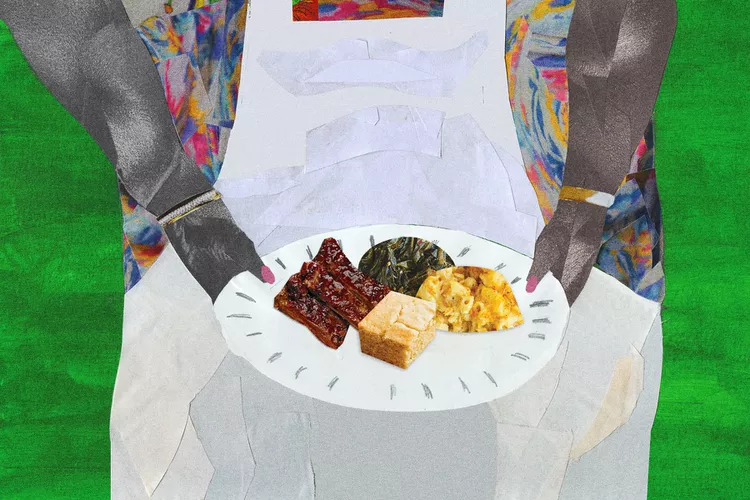One writer’s take on the history, traditions, and personal importance of the Cookout.

We have a unique way in which we communicate with each other in the Black community. It’s an interpersonal experience that happens among neighbors, distant cousins, and longtime friends. We often need to see each other, laugh, bond, and embrace over things like food. That’s where the Cookout comes in. It’s a joyous event that celebrates our advancements, growth, and kinship. An integral part of how the Cookout executes is through the music, traditions, and cuisine. Black American cuisine is often associated with Southern comfort food because of colonial slavery and the antebellum era. Moreover, the Cookout depends on these traditions and history that nourish it, ensuring it survives. Consequently, it creates a powerful environment that is unanimous for all Black folks.

The History of the Cookout in Black America
Although some may see it as a loosely traditional event, the Cookout has survived through generations of Black matriarchs that kept it alive. Big Mama, Nana, or Madea are the glue that hold the community and this ancestral practice together. Generally, the elders have full seniority at these events. They provide wisdom, spontaneity, and leadership among all participants. It is widely known in Black culture that the Cookout is a safe space, specifically for acceptance. Many Black Americans invite friends and mates to Cookouts for guidance and approval from their family and peers. It’s always lighthearted fun; real judgment is not a deciding factor, but it remains a running joke in the community.
Food is an Imperative Element of Tradition
Food constitutes an integral part of the Cookout and Black American experience. The history of colonial chattel slavery influences what we eat today at these events since food was often used as a means of capital for the enslaved. Through cooking, enslaved Black people could survive because they often rationed their food according to accessibility. Corn was one of the staples in their diet because it thrived even on less-fertile land. It could be consumed frequently and transformed into different dishes like hoecakes, ash-cakes, spoonbread, corn pone, and cornbread. Additionally, enslaved individuals consumed pork, which was cost-effective for plantation owners, allowing one pig to feed many. Today, pork remains a staple in soul food. Many Black people enjoy dishes like chitlins, leafy greens cooked with pork, and grilled or smoked meats, including hot dogs and ribs. Prayer with linked hands is always conducted before we eat, where the matriarch or an elder blesses the food, or anyone present can offer a prayer. Food is consumed according to age, with the youngest and the elders first and everyone else last.

From Music to Clothing, Other Traditions Set the Cookout Apart
Cookouts can happen any time of the year as long as it’s warm. They can be hosted in public areas or backyards, depending on attendance. Traditionally, the type of music is a hallmark of a great Cookout. Music holds an essential place in Black culture, celebrating the joy and experiences of our community. Cookouts often feature legendary Black musicians from the past, such as Frankie Beverly and Maze’s “Before I Let Go,” which has become an anthem in the community celebrating Black heritage. Interestingly, in 2019, Beyoncé covered this beloved song during her Coachella set, further igniting its relevance. Line dancing is also a staple at the Cookout, with various regional dances that all participants intuitively know.
Moreover, clothing can be a fun element at cookouts. Some families opt for matching T-shirts featuring a design or the family name. The general guideline is to wear clothes that are suitable for getting dirty, given the various activities and competitions. Common activities include foot races, sack races, basketball, and football. At night, you might also see fireworks. At the end of the day, family members often share leftovers, ensuring everyone takes home a bit of the Cookout feast.
Whether in fall or spring, rain or shine, attending the Cookout is a rite of passage for Black folks. It manifests in various forms, including family reunions and barbeques, because it is an esteemed event. It fosters kinship, acknowledges our history, and celebrates life and the years that have passed. Moreover, it’s an opportunity to reconnect with families, a practice that resonates deeply, especially for Black Americans in the south. The culinary practices and customs may derive from the enslaved conditions in the Antebellum South, but the Cookout stands as an empowering celebration of familial traditions and community goodwill. When we gather together, everything feels right because we have each other.





